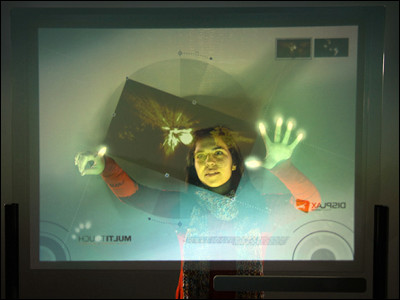A technology has been developed to identify `` living human skin '' and improve the security of face authentication

In recent years, many smartphones are equipped with a face authentication system, and users have welcomed the simplicity of unlocking just by holding their face up.
Your future face-scanning phone could check for live skin-CNET
https://www.cnet.com/news/your-future-face-scanning-phone-could-check-for-live-skin/
While many smartphones are equipped with face authentication technology, unlike Apple's Face ID developed by investing heavily in face authentication technology, some Android smartphones have low-level face authentication security Security company Kaspersky pointed out that there were many. Some Android smartphones that use low-accuracy face authentication technology may be able to break through face authentication with a two-dimensional photograph instead of an actual face.
So, Trinamix , a startup affiliated with BASF , a German general chemical manufacturer, claims to have developed an algorithm that detects 'living human skin' to improve the security of face recognition technology. By examining whether the subject is human skin when scanning the face, it is no longer possible to break through face recognition with sophisticated models created with 3D printers, as well as planar photographs.

The newly developed algorithm does not require special devices that are not installed in existing smartphones, and uses technologies such as infrared
According to Ingmar Bruder, founder and CEO of Trinamix, the backscattering of infrared radiation differs between living human skin and dead human or artificial skin. Therefore, living human skin can be identified by detecting the backscattering of infrared rays emitted by systems such as infrared dot projectors used by existing face authentication systems.
In fact, Stein met Bruder at a Manhattan hotel and saw how Trinamix's algorithm could identify human skin. Actually, when trying to make a face mask made of rubber attached to a LG smartphone equipped with a camera incorporating Trinamix's algorithm with face recognition, it was determined that this was not a living human skin. thing. Later, when Stein and Bruder turned their heads to the same LG smartphone, it was determined that this was human skin. Mr. Stein stated that in the demonstration using LG smartphones, the face had to be adjusted to a specific angle.

by Scott Stein
It seems that Trinamix's algorithm can identify not only human skin and others but also various materials such as wood, plastic, metal and so on. Therefore, there is a possibility that it can be applied to technologies other than face authentication, such as a system where robots select and transport specific materials from factories and warehouses.
Trinamix has already partnered with leading semiconductor developer

Related Posts:







